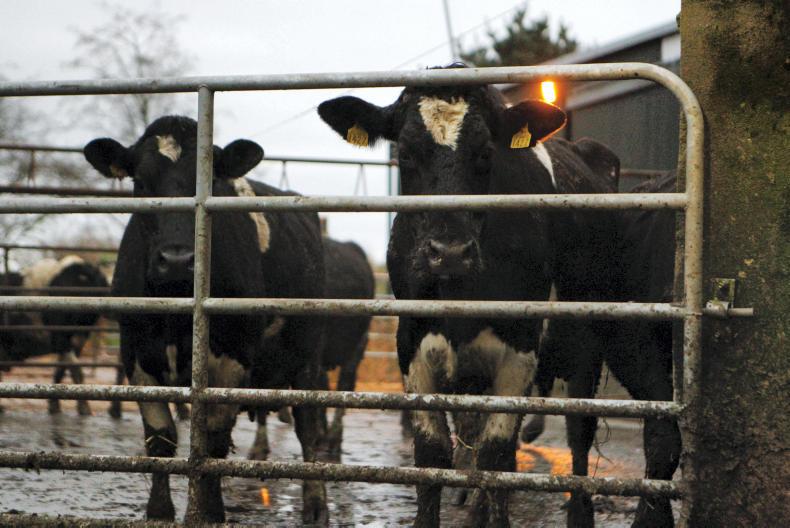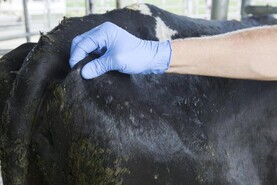With many dairy herds in the throes of calving, this is a really busy time of year, but it is also a risky time of year, particularly for animal health.
Speaking to a vet over the weekend, the main problems he is encountering at the moment is milk fever and E coli mastitis.
He says milk fever is at near epidemic levels, with some herds getting lots of cases.
Milk fever is a metabolic disorder caused by insufficient calcium in the bloodstream. The result is a downer cow and failure to treat in time can cause death. In acute cases, the cow can die quickly. Most cases occur within five days after calving.
Milk fever: what to look out for
Some cows are more at risk than others.
Generally, it is older and higher-yielding cows that are at more risk. There is anecdotal evidence to say that Jersey and Jersey crossbred cows are more at risk too.
These risks aside, management has a huge bearing also. Cows that are in too high a body condition score are more at risk.
The composition of the diet is also a huge factor. Cows should be on a low-calcium, high-magnesium diet pre-calving. Some farmers give cows a calcium bolus immediately before or after calving to boost calcium levels after calving and prevent milk fever.
There is also a link between calcium and potash.
Diets high in potash (for example silage high in potassium) prevents the absorption of calcium in the rumen, so these cows are very prone to milk fever. Therefore, make sure that cows are on low-potash silage in the weeks prior to calving.
E-coli mastitis
A very serious type of mastitis is E coli mastitis. This can cause lost quarters and even death. In many cases, E coli can be a secondary infection and it is often linked with milk fever.
Calcium and magnesium are important for muscle function. A deficiency in either will reduce the effectiveness of the sphincter muscle in the teat, which means the teat canal remains open for longer and allows infection in.
So ensuring the mineral status of the herd is in order is one part of defence. Keeping cows in an hygienic environment is another part of the defence. Scrape down cubicle beds twice a day and disinfect with lime. Hydrated lime is better than ordinary ground limestone at killing bacteria as it increases the pH to 12.
Be vigilant for cases of all mastitis, stripping cows at morning and evening milking. If E coli is suspected, get the vet as soon as possible, as drugs and possibly fluids will be required. E coli is a serious disease that can cause death.
Read more
Meal feeding options this spring
With many dairy herds in the throes of calving, this is a really busy time of year, but it is also a risky time of year, particularly for animal health.
Speaking to a vet over the weekend, the main problems he is encountering at the moment is milk fever and E coli mastitis.
He says milk fever is at near epidemic levels, with some herds getting lots of cases.
Milk fever is a metabolic disorder caused by insufficient calcium in the bloodstream. The result is a downer cow and failure to treat in time can cause death. In acute cases, the cow can die quickly. Most cases occur within five days after calving.
Milk fever: what to look out for
Some cows are more at risk than others.
Generally, it is older and higher-yielding cows that are at more risk. There is anecdotal evidence to say that Jersey and Jersey crossbred cows are more at risk too.
These risks aside, management has a huge bearing also. Cows that are in too high a body condition score are more at risk.
The composition of the diet is also a huge factor. Cows should be on a low-calcium, high-magnesium diet pre-calving. Some farmers give cows a calcium bolus immediately before or after calving to boost calcium levels after calving and prevent milk fever.
There is also a link between calcium and potash.
Diets high in potash (for example silage high in potassium) prevents the absorption of calcium in the rumen, so these cows are very prone to milk fever. Therefore, make sure that cows are on low-potash silage in the weeks prior to calving.
E-coli mastitis
A very serious type of mastitis is E coli mastitis. This can cause lost quarters and even death. In many cases, E coli can be a secondary infection and it is often linked with milk fever.
Calcium and magnesium are important for muscle function. A deficiency in either will reduce the effectiveness of the sphincter muscle in the teat, which means the teat canal remains open for longer and allows infection in.
So ensuring the mineral status of the herd is in order is one part of defence. Keeping cows in an hygienic environment is another part of the defence. Scrape down cubicle beds twice a day and disinfect with lime. Hydrated lime is better than ordinary ground limestone at killing bacteria as it increases the pH to 12.
Be vigilant for cases of all mastitis, stripping cows at morning and evening milking. If E coli is suspected, get the vet as soon as possible, as drugs and possibly fluids will be required. E coli is a serious disease that can cause death.
Read more
Meal feeding options this spring






 This is a subscriber-only article
This is a subscriber-only article










SHARING OPTIONS: